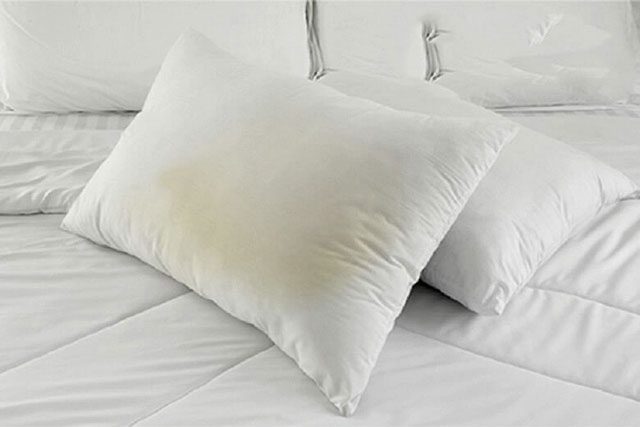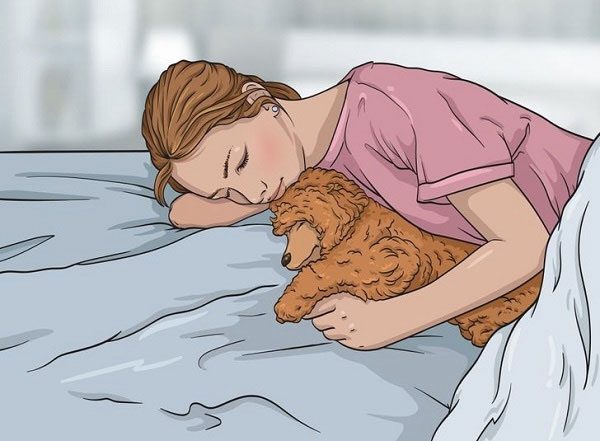The bed is where we rest, relax, and restore our bodies after a hard day’s work. However, if we DO NOT clean our bed sheets or pillowcases regularly, they can become a breeding ground for bacteria, affecting the health of your entire family.
About one-third of human life is spent sleeping. Healthy adults need to sleep at least 7 hours a day, while infants and teenagers require even more sleep to support their growth and development.
A survey conducted by the National Sleep Foundation in the United States indicates that a clean bed can contribute to improving a person’s sleep quality. However, pillowcases and bed sheets are often not as clean as we imagine. In fact, they are often a breeding ground for dust mites and bacteria, making them a “hygiene blind spot” in the home.

A clean bed can contribute to improving a person’s sleep quality.
How Dirty Are Pillowcases and Bed Sheets?
To understand how dirty unwashed pillowcases and bed sheets can get, a survey from North Carolina State University was conducted involving 2,250 adults. This survey explored the frequency of changing bed sheets among people and revealed that over 50% of respondents change their sheets every four months, and even 12% only change them during holidays, year-end, or special occasions.
In a study by AmeriSleep, a bedding company in the United States, participants were asked not to wash their bed sheets for four weeks. The results showed that by the end of the testing period, the bacterial count in pillowcases was 39 times higher than that of a pet’s food bowl, while bed sheets contained 5.4 times more bacteria than a toothbrush holder. Furthermore, unwashed pillowcases for one week could produce 3 million bacteria, which is 17,442 times more than a toilet seat.
The study also identified four main types of bacteria found in bedding, including gram-negative bacteria (41.45%), gram-positive bacteria (24.94%), bacilli (23.38%), and gram-positive cocci (10.23%).

The bacterial count in pillowcases is 39 times higher than that of a pet’s food bowl.
How Do Dirty Pillowcases and Bed Sheets Affect Health?
Every time we lie on the bed, our bodies shed dead skin cells along with dirt, sweat, or oil that accumulates on the skin’s surface. Even when we shower thoroughly, traces of cosmetics and moisturizers can still remain on the bed. Additionally, dust and allergens, including dust mites, can accumulate over time and infiltrate bed sheets, pillows, and mattresses.
According to data from Cleveland Clinic, here are some common health impacts caused by a dirty bed:
- Asthma and allergy symptoms: Dust mites on the bed can exacerbate allergy and asthma symptoms.
- Rash and eczema symptoms: Bacteria in dead skin cells can increase the risk of rashes. Eczema, one of the most common types of skin rashes, results from a combination of dry skin and excessive bacteria on the skin. Additionally, dust mites can also cause rashes.
- Acne and folliculitis: Bacteria can also cause folliculitis, an infection that can sometimes be painful and lead to itchy skin and breakouts.
- Fungal infections and parasites: Pets can carry fungal organisms and parasites, such as ringworm and scabies, which can then transfer to beds and human skin.

If you have pets that sleep on the bed, it is advisable to change the sheets every three to four days.
How Often Should You Wash Pillowcases and Bed Sheets?
The National Sleep Foundation recommends changing bed sheets and pillowcases weekly, especially for those who sweat at night, families with young children, and those experiencing hair loss.
If you have pets that sleep on the bed, it is advisable to change the sheets every three to four days. Comforters and duvet covers should be cleaned every two to three months, while mattresses can be washed every six months or longer. However, due to their design, comforter inserts should only be dry cleaned. After washing, they should be aired in a well-ventilated area to eliminate odors naturally.
Moreover, we should frequently expose comforter and pillow inserts to sunlight to kill bacteria and pathogens present in the bedding. This cleaning helps prolong the lifespan of mattresses and bed linens while improving sleep quality and overall health.


















































